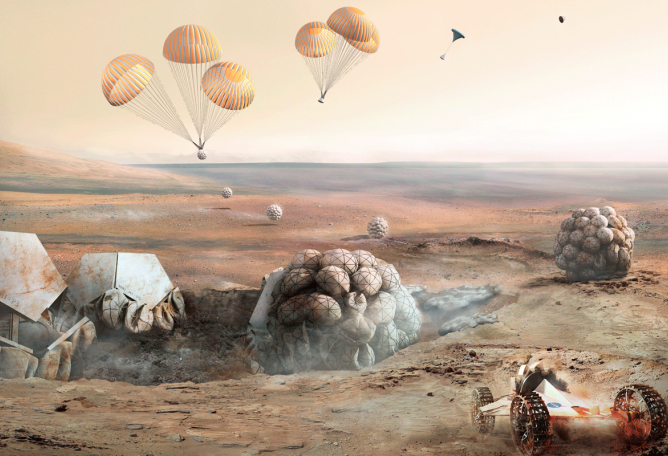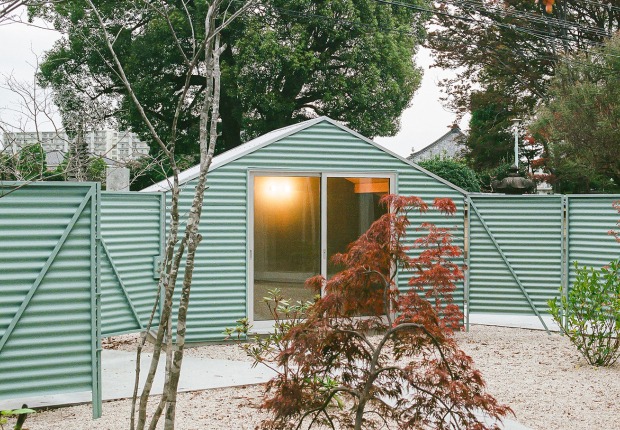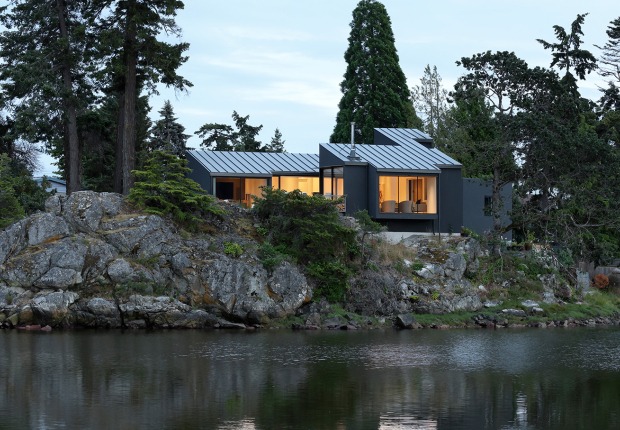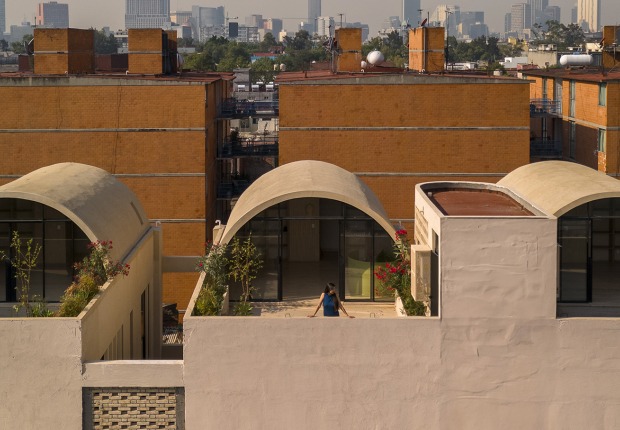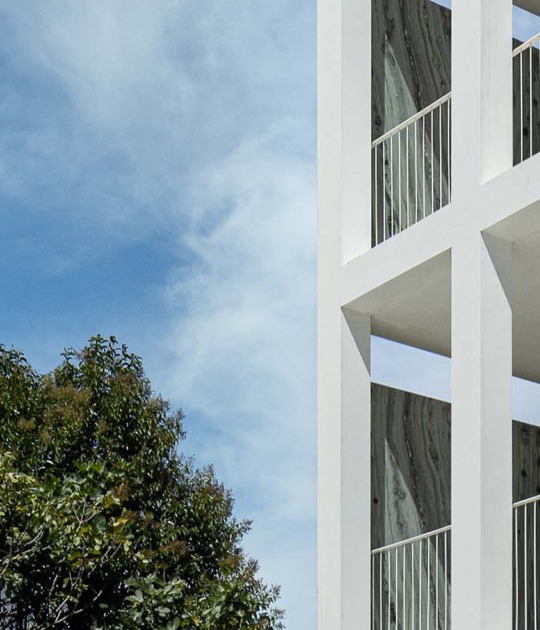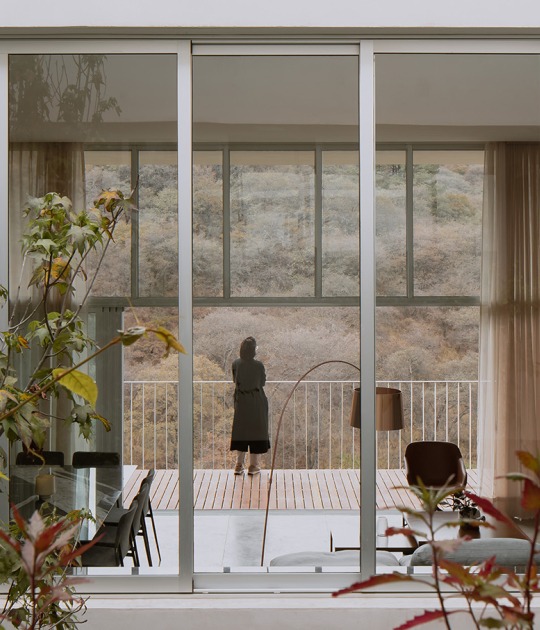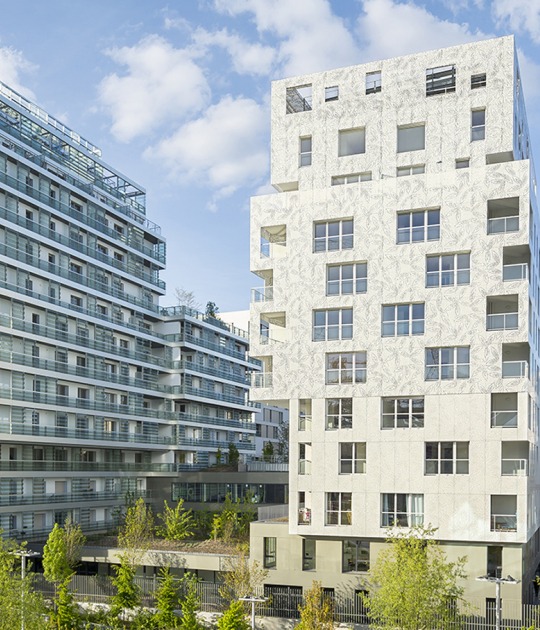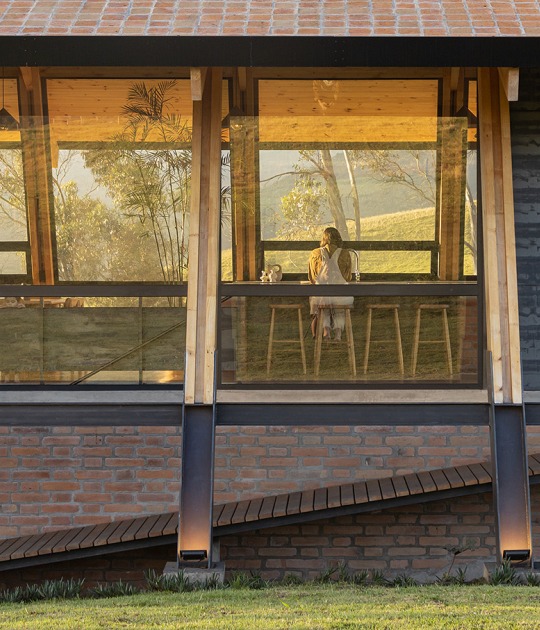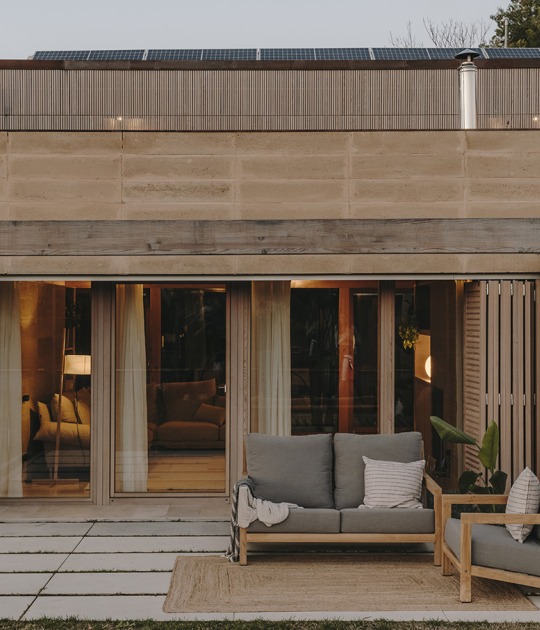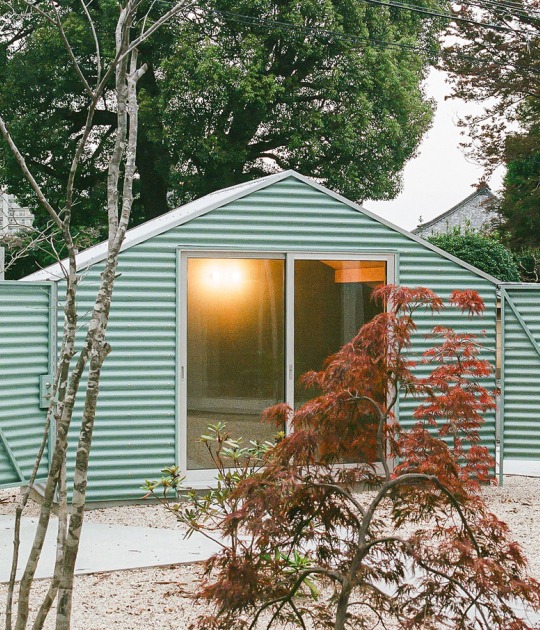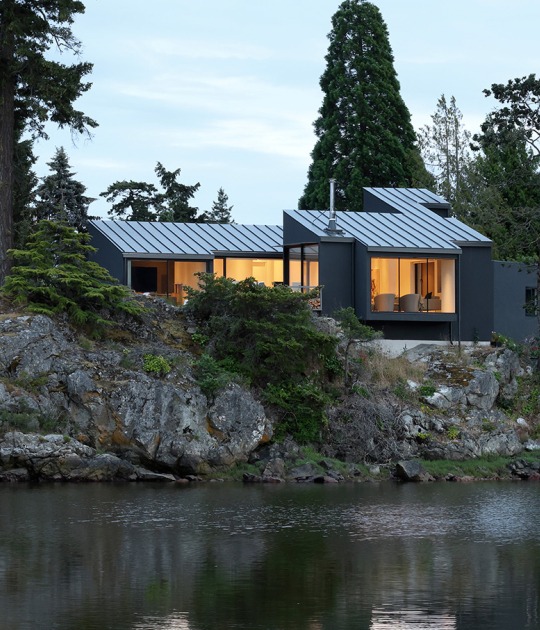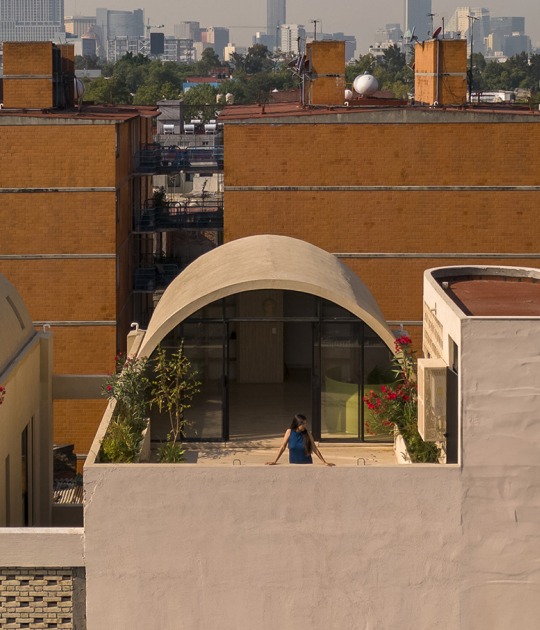Foster+Partners has developed a system of Martian settlement construction called Regolith Additive Construction (RAC) that uses a semi-autonomous system based on hierarchies of robots which carry out different functions for 3D Printed Habitat Challenge. The aim of this process is to be able to use of the outer layer made of loose ground of the Mars surface (regolith) as an environmental protection around an inflatable modular architecture.
The project is clearly organized into different phases and functions, always looking for an internal redundancy that allows a functional flexibility and the exchange of features, reducing the number of critical situations when an item fails. The process steps are divided into a first search of the indicated emplacement, followed by the placement of modules and, finally the covering of the whole with a layer of regolith. The freedom of settlement process is open to uncertain results.
Description of the project by Foster + Partners
The proposal considers multiple aspects of the project from delivery and deployment to construction and operations. The habitat will be delivered in two stages prior to the arrival of the astronauts. First, the semi-autonomous robots select the site and dig a 1.5 metre deep crater, followed by a second delivery of the inflatable modules which sit within the crater to form the core of the settlement. Given the vast distance from the Earth and the ensuing communication delays, the deployment and construction is designed to take place with minimal human input, relying on rules and objectives rather than closely defined instructions. This makes the system more adaptive to change and unexpected challenges – a strong possibility for a mission of this scale.
Three different kinds of robots are parachuted to the surface of Mars, each performing a specialised task within the large-scale Regolith Additive Construction (RAC) process. The larger ‘Diggers’ create the crater by excavating the regolith, which the medium-sized ‘Transporters’ then move into position over the inflatable habitat modules layer by layer. The loose Martian soil is then fused around the modules using microwaves - the same principles involved in 3D-printing - by several small ‘Melters’. The fused regolith creates a permanent shield that protects the settlement from excessive radiation and extreme outside temperatures. The separation of tasks amongst the large number of robots, and the modularity of the habitat means a high level of redundancy is incorporated within the system – if one robot fails, or a single module is damaged, there are others that can fulfil its task, increasing the chances of a successful mission.
The design of the compact 93 sqm habitat modules combines spatial efficiency with human physiology and psychology, with overlapping private and communal spaces, finished with ‘soft’ materials and enhanced virtual environments, which help reduce the adverse effects of monotony, while creating positive living environment for the astronauts.
This continues the practice’s earlier design explorations for building in extreme environments and extra-terrestrial habitats such as the Lunar Habitation project in consortium with the European Space Agency.


